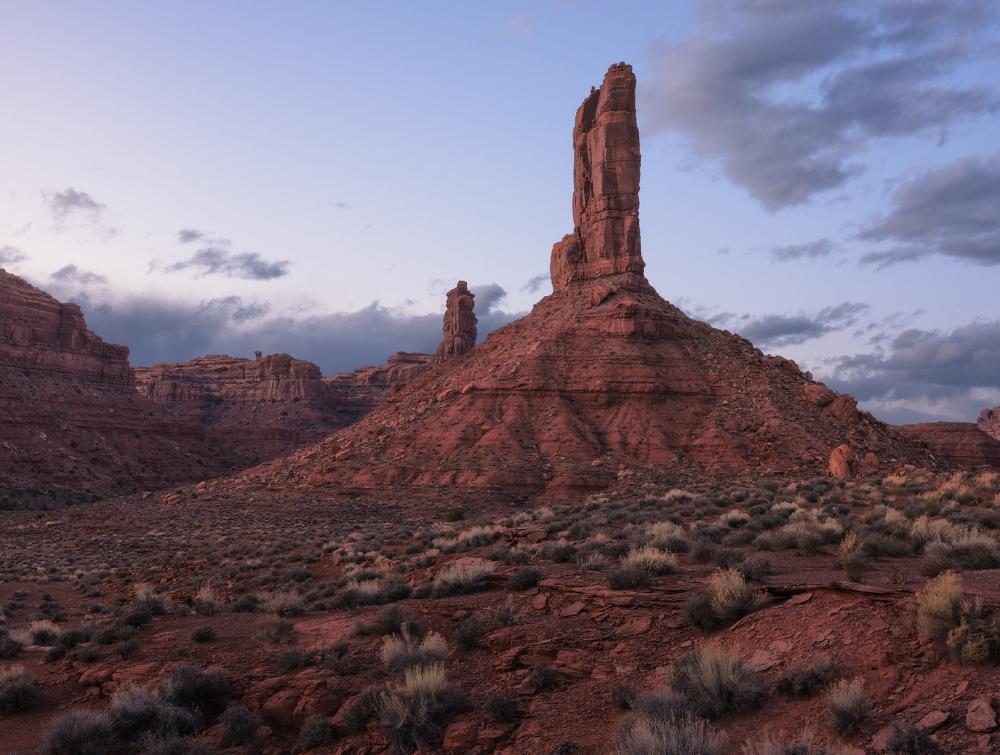One year ago, Trump launched his attack on our public lands. This is what’s happened since then

Mason Cummings, The Wilderness Society
April 26 marks the anniversary of Trump’s unprecedented executive order to "review" numerous national monuments that provide recreation and education opportunities for Americans coast to coast.
The attack targeted 27 monuments, ultimately shrinking Utah's Bears Ears and Grand Staircase-Escalante national monuments and opening those landscapes up for drilling, mining and development. Eight additional monuments have been recommended for either similar reduced protection or potentially harmful management changes.
When they write the long, painful book on Trump's conservation policies, it may well start with his unprecedented attack on national monument lands.
But while that will be the beginning of the story, it’s just a single chapter.
Trump's monument order was part of a larger tale of destruction the White House would soon come to articulate as “energy dominance.”
This antiquated vision relies on aggressive drilling and development with no regard for the vast wildlands that may be damaged by it.

The Trump administration has pushed "energy dominance" by prioritizing drilling and mining over all other uses of public lands. Credit: Mason Cummings, The Wilderness Society
Indeed, the period since the national monument order has been perhaps the worst single year on record for our nation's public lands and waters—not just national monuments.
As political turmoil roiled the nation more broadly, the Trump administration mounted an offensive against irreplaceable places including Alaska’s Arctic National Wildlife Refuge and Minnesota's Boundary Waters Canoe Area Wilderness, all in service of extractive industries like oil, coal and mineral mining.
What has happened since Trump's monument order: the lowlights
-
Trump illegally stripped 2 million acres from the Utah monuments.
Trump effectively eliminated Bears Ears and vast portions of Grand Staircase-Escalante national monuments in Utah, exposing thousands of culturally and ecologically important sites to drilling, mining and visitor misbehavior. It was the biggest single rollback of land protections in American history. We are challenging Trump’s actions in court, and we have a strong case, but in the meantime, the government is rushing forward with plans for how the un-protected lands will be managed, and companies are now able to stake uranium and coal mining claims there. Native American tribes that lobbied for the protection of Bears Ears in the first place say that artifact looting is ongoing at the monument since Trump’s rollbacks.
-
Congress worked with Trump to invite drilling in the precious Arctic Refuge.
With the enthusiastic encouragement of the White House, Congress passed a tax bill that invited oil and gas drilling in the sensitive coastal plain of the Arctic National Wildlife Refuge, one of the last great, intact wild ecosystems on the planet. Trump boasted this would produce "tremendous energy" despite evidence to the contrary. Just days ago, the Department of the Interior officially began the process of opening the refuge for drilling leases.
-
Agencies prioritized drilling on public lands.
In general, the Trump administration has ramped up its drill-first focus, prioritizing energy over all other uses of public lands. In 2017 alone, the Bureau of Land Management offered nearly 12 million acres for competitive oil and gas lease sale auctions, more than in the prior three years combined. Trump also proposed budget increases for coal, oil and gas development on public lands, and Interior Secretary Ryan Zinke revealed a new leasing review process that makes it easier for oil and gas companies to gain access to those lands.
-
Trump pushed drilling in nearly all coastal U.S. waters.
President Trump signed an executive order directing the Interior Department to lift drilling restrictions that President Barack Obama imposed in the Arctic and Atlantic oceans. Early in 2018, the administration went even further, proposing to open nearly all offshore U.S. waters to drilling at the same time the administration was weakening safeguards for offshore drilling operations.
-
Toxic mining moved forward near America's most popular wilderness.
In December, the Trump administration quietly issued a decision that allows the renewal of mining leases to move forward near Minnesota's Boundary Waters Canoe Area Wilderness, which has been called the most-visited wilderness area in America.
-
Uranium mining encouraged next to the Grand Canyon.
The U.S. Department of Agriculture recommended re-opening more than 1 million acres of land adjacent to the Grand Canyon for uranium mining, a decision pushed by powerful industry groups.
-
Trump proposed letting Zinke run pipelines through parks.
In Trump's infrastructure plan, he moved to give Interior Secretary Ryan Zinke the sole authority to approve natural gas pipelines running through national parks, the kind of decision formerly left to Congress.
A year after Trump's monument order, it's clear this trend won't stop unless we do something about it.
It's time to ask leaders to cease policies that encourage drilling and mining in or near wild public lands. These attacks on our wildlands disturb wildlife, ancient artifacts, fossil beds and the enjoyment of millions of Americans who visit national parks and other public lands and waters each year, to say nothing of the pollution and climate change consequences of forcing more dirty fossil fuels into circulation.
